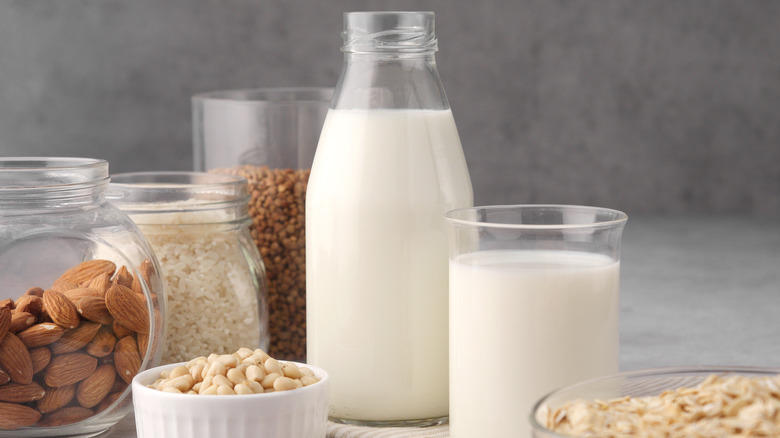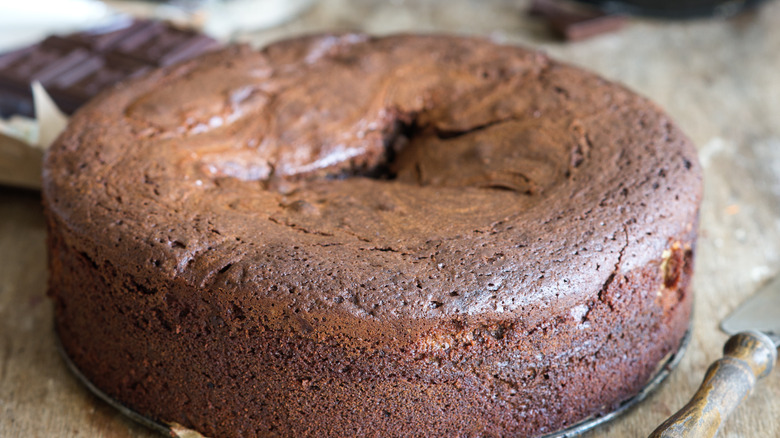The Non-Dairy Milks You Should Avoid For Baked Goods
These days, bakers have more options than ever, including many kinds of plant-based milks. But look carefully at the label. Once you've narrowed it down to soy, almond, oat, or another variety, you should also pay attention to what else has been added to the product, especially if you plan to bake with it. Sweetened and flavored milks are fine for drinking on their own, adding to cereal, or making shakes and smoothies. However, there are two reasons they're not ideal when it comes to baking.
The first issue is flavor. While vanilla tastes incredible, it's not so compatible with recipes like cream cheese cheddar biscuits or homemade sandwich bread, where a savory or neutral flavor is desired. If you want to make these dishes vegan, stick to unflavored plant milk instead. You might think it's okay to use vanilla-flavored plant milks in recipes that call for vanilla extract, but proceed with caution. It's possible to have too much of a good thing — even vanilla! But there's an even bigger functional problem that some flavored and sweetened plant milks may pose to your baking.
Hold the sugar
You guessed it — it's sugar. To understand why these ingredients could alter the outcomes of your recipes, let's start by comparing the sugar content of a few varieties. Many baking recipes that include milk were written for cow's milk, which contains about 12 grams of sugar per cup. Meanwhile, Silk's plant-based beverages run the gamut, from 9 grams of sugar per cup in its vanilla soy milk to 13 grams in vanilla almond milk, 15 grams in its chocolate soy milk, and 17 grams in dark chocolate almond milk.
As you may know, sugar has some important roles in baking. For starters, it helps batters rise evenly. If sweetened plant milk adds too much sugar to the recipe, it may rise too fast and then deflate, resulting in a sunken appearance with an undercooked middle. It can also make the texture crumbly instead of soft and spongy. What's more, sugar is an important part of the Maillard reaction, and too much sugar can lead to over-browning and a darker color than you want in your baked goods. To be safe, look for a product with about the same sugar content as cow's milk, or just use the original ingredient as written in the recipe.

